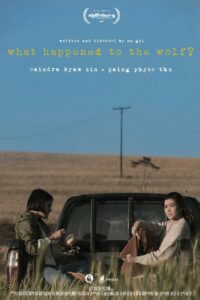
An SFU archaeology class has been given a one of a kind opportunity this semester to oversee a project of over 900 stone artifacts collected from a farm near Fort St. John.
Under the guidance of Barbara Winter, a class of 18 students identified, catalogued, and photographed artifacts dating back 7,000 to 10,000 years.
The collection is being curated by students through the resources of the Museum of Archaeology and Ethnology, and will be returned to the Treaty 8 Tse’K’wa Interpretive Centre, which is being built to house this collection.
The artifacts come to SFU courtesy of Len Donaldson. Donaldson collected these artifacts whenever he found them scattered over the land he owns and manages, gradually developing an impressive collection.
The artifacts in the collection provide influential information can be gained, from an area where archaeological evidence is scarce and migration theories are still hotly debated.
“A wonderful opportunity presented itself when Len Donaldson offered the collection to SFU last year,” said Winter. “It is both a hands-on project in museum curation for the students, giving them experience in the development of a collection, and a wonderful way to support First Nations communities in the north.”
Jan Anderson, a research assistant with the SFU Archaeology Department and member of the class, says that this collection means a lot to her and to the other students in the class.
“To be able to get hands on with all these super cool lithic tools [. . .] ties together all the things that I’ve worked on,” said Anderson. “I love archaeology because I like knowing that somebody else used these.”
These tools led Anderson to hypothesize as to the life of early humans: “What would someone have done with this? Would they have been butchering an animal, tanning a hide, woodworking? I wonder what their life was like. That’s a neat connection with people who were just going about their daily lives like we were,” she said.
According to Anderson, this collection provides a physical connection to the Treaty 8 First Nations’ important ancestral heritage. This collection allows these peoples to hold objects originally used by their ancestors.
“Here’s something that is a teaching collection, and you can connect with the people that were your ancestors and have something that is known that they held in their hand,” stated Anderson. “That’s kind of what I’d like us to give back to the Treaty 8 People.”
Winter is also advising the Treaty 8 First Nations in their plans for Tse’K’wa, a centre to be built at the site of Charlie Lake Cave. The cave was excavated years ago by SFU professors of archaeology Knut Fladmark and Jon Driver, the latter of whom is SFU’s current VP Academic.
In 2014, the Treaty 8 bands purchased the site, which has since yielded information on early people and animals in BC at the end of the last Ice Age.
Winters and Anderson hope that the return of this collection will assist the Treaty 8 First Nations communities to gain material from their cultural heritage, building on and solidifying the narration of their own history as well as that of British Columbia as a whole.













